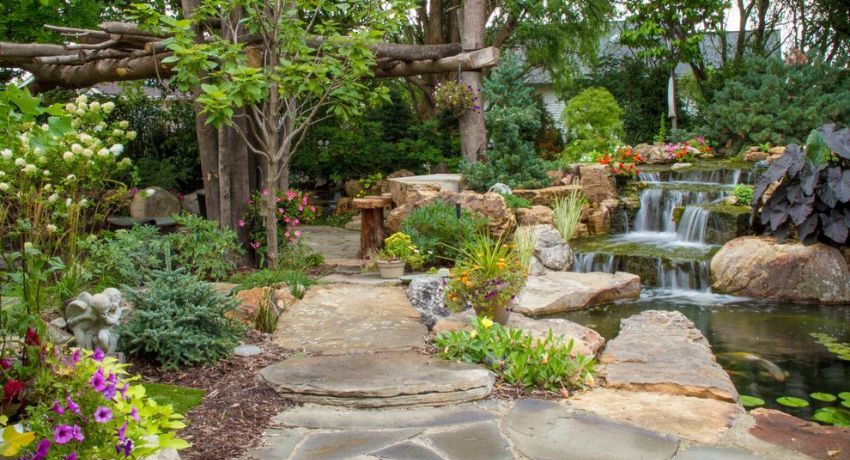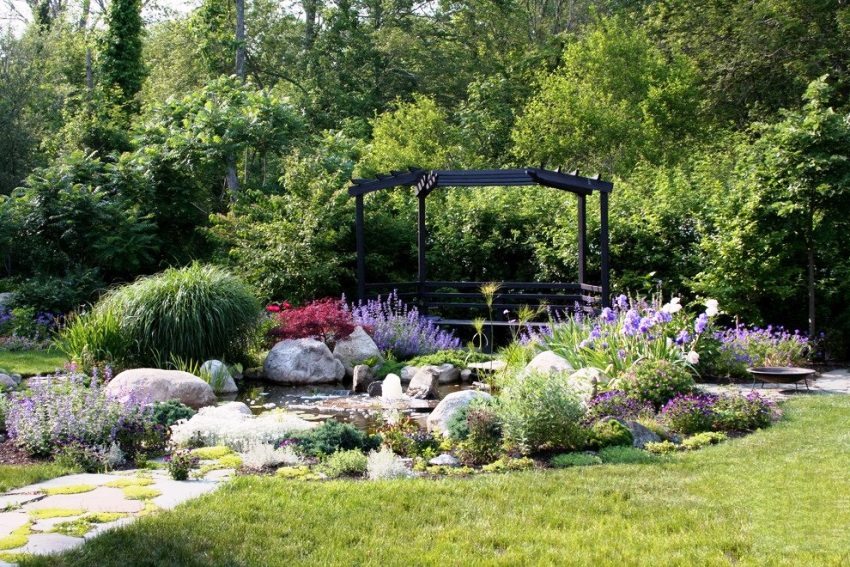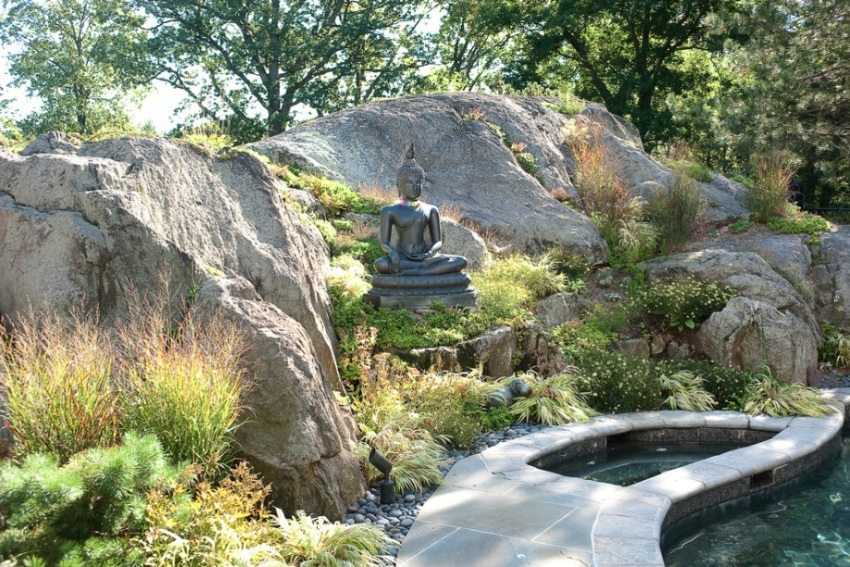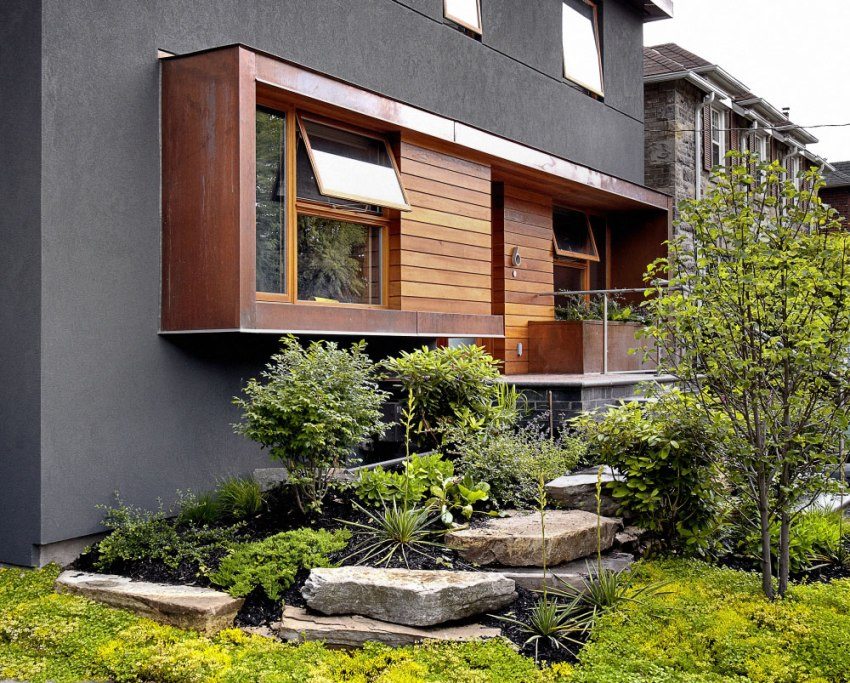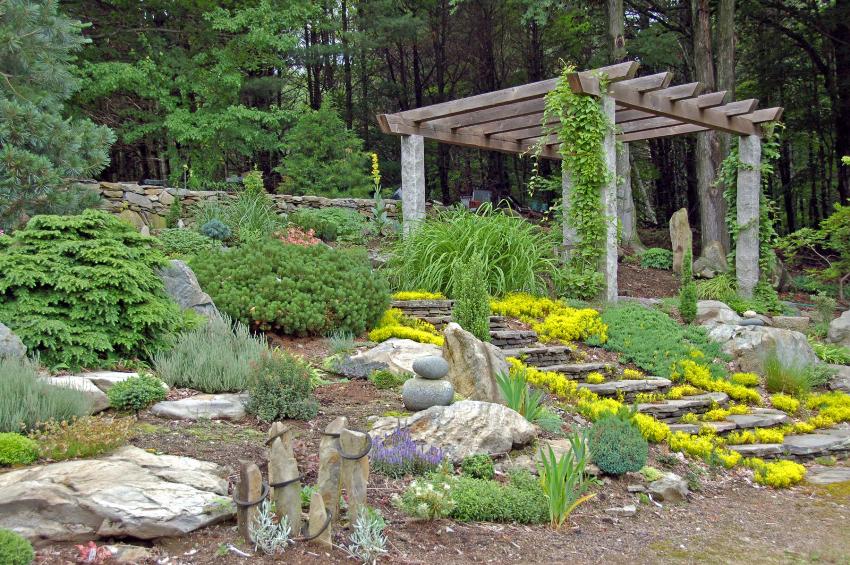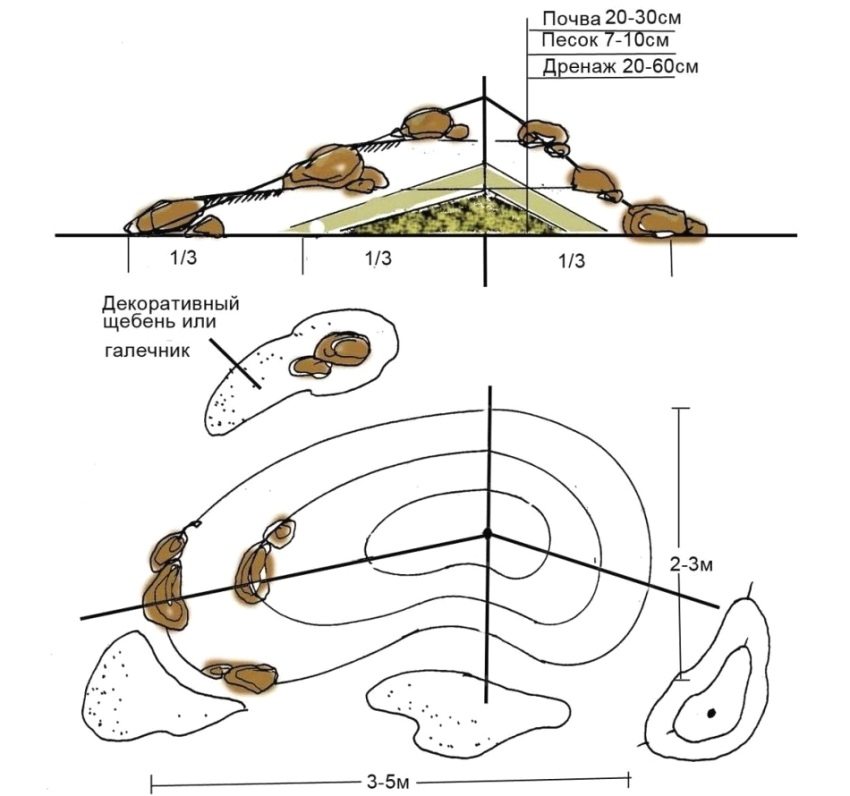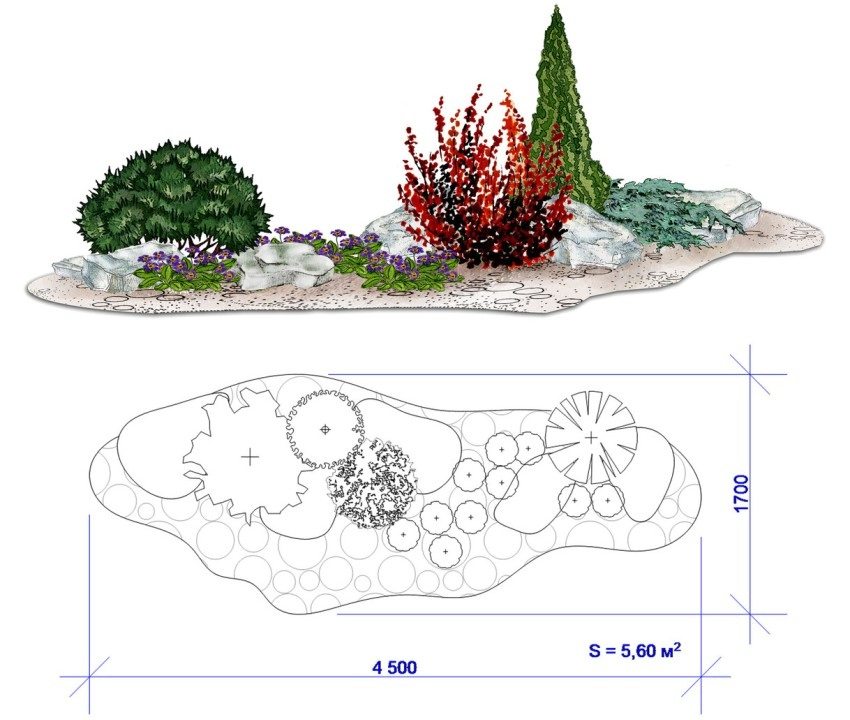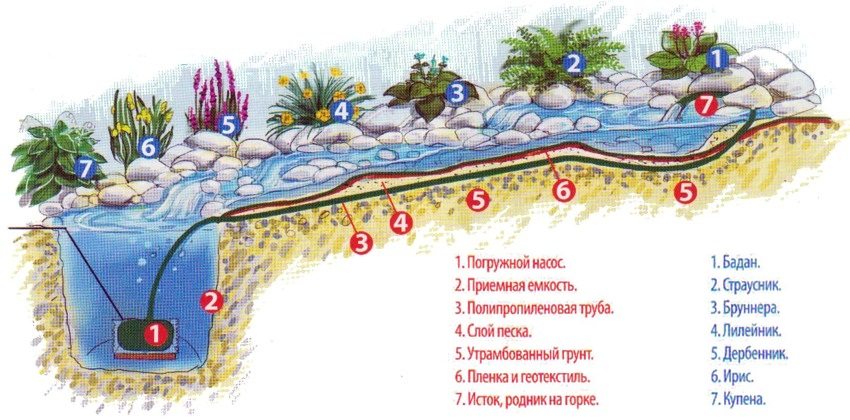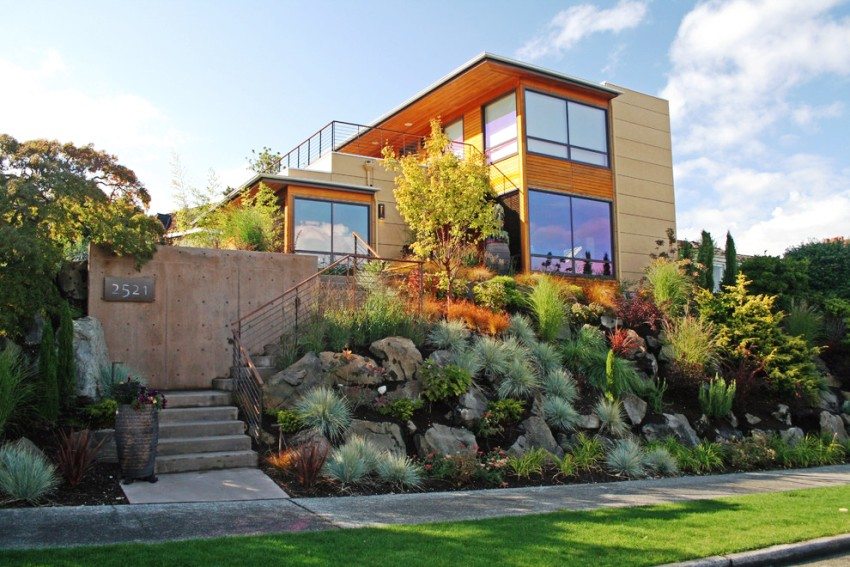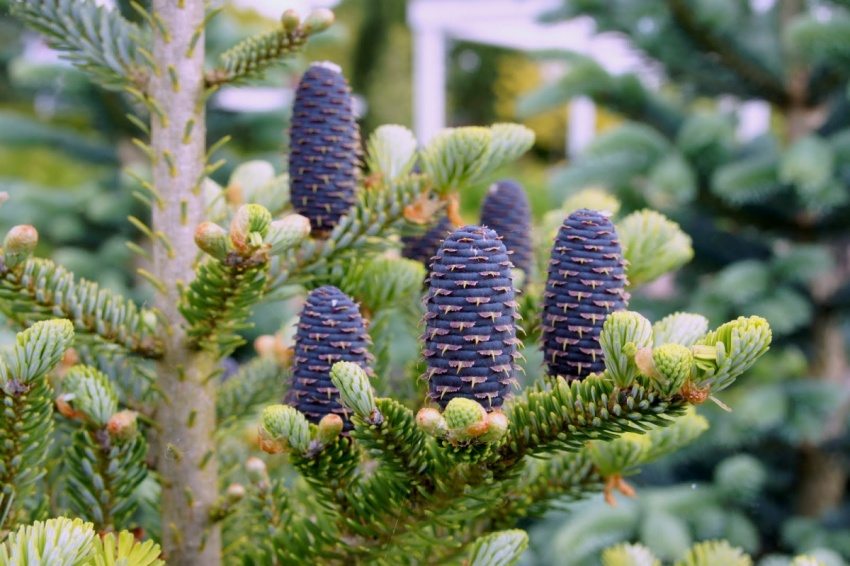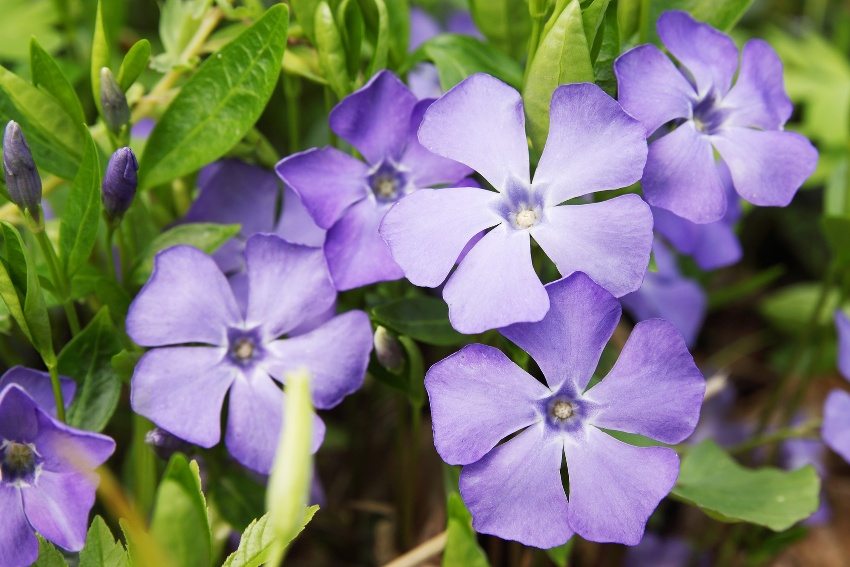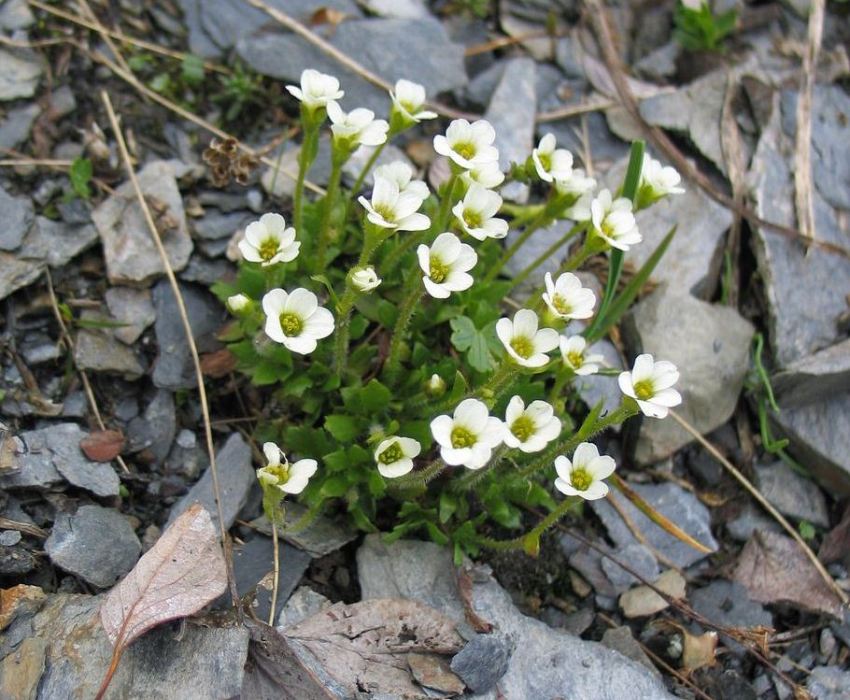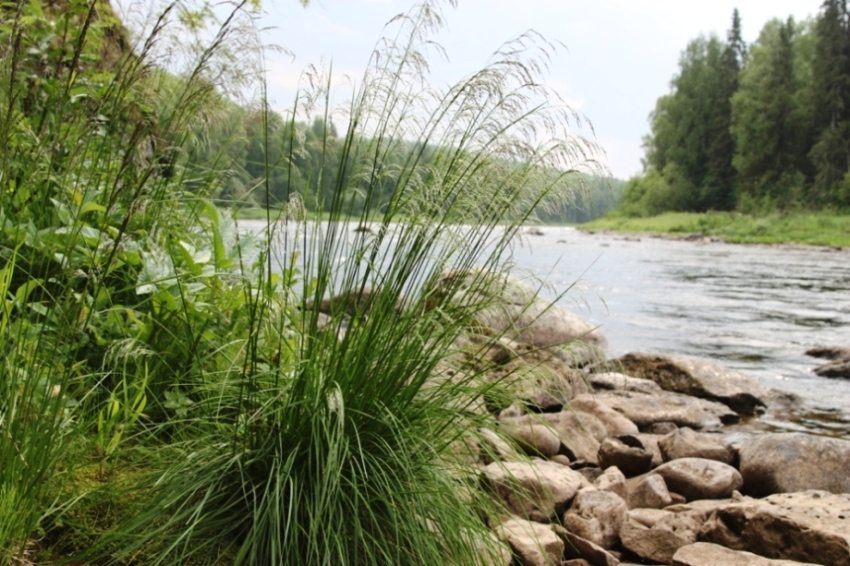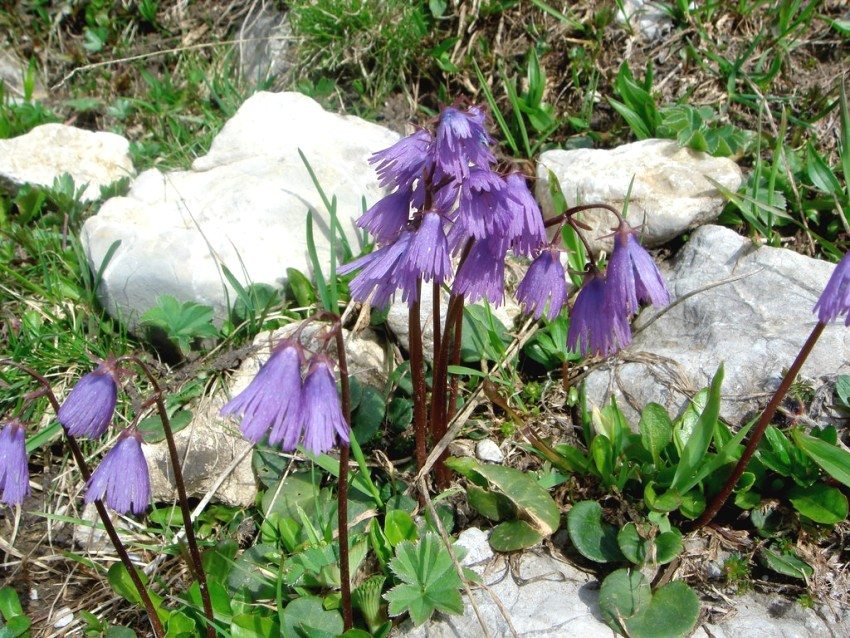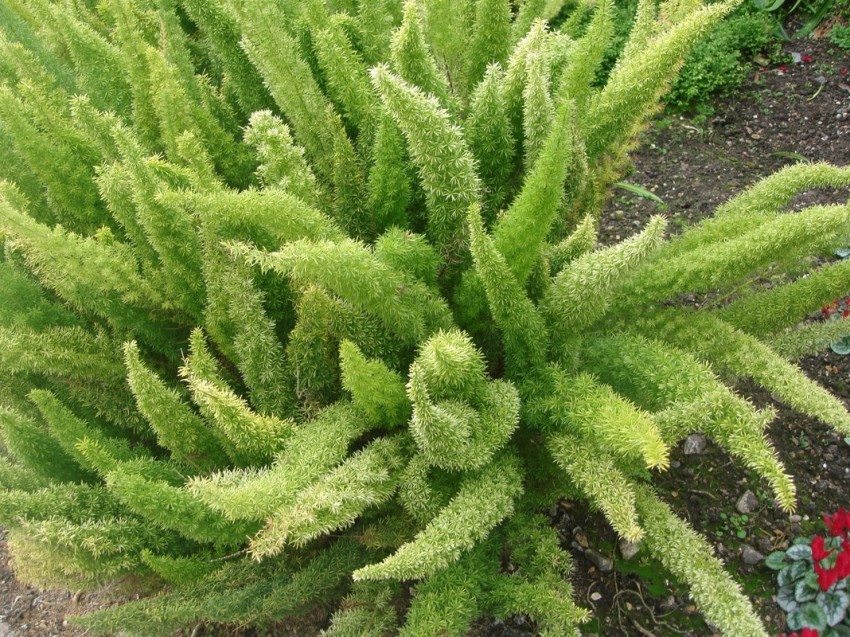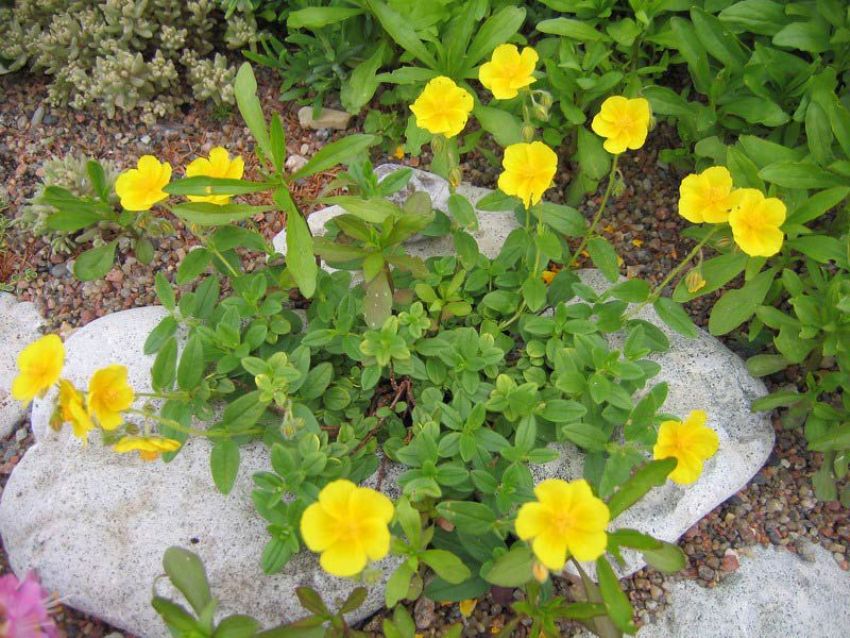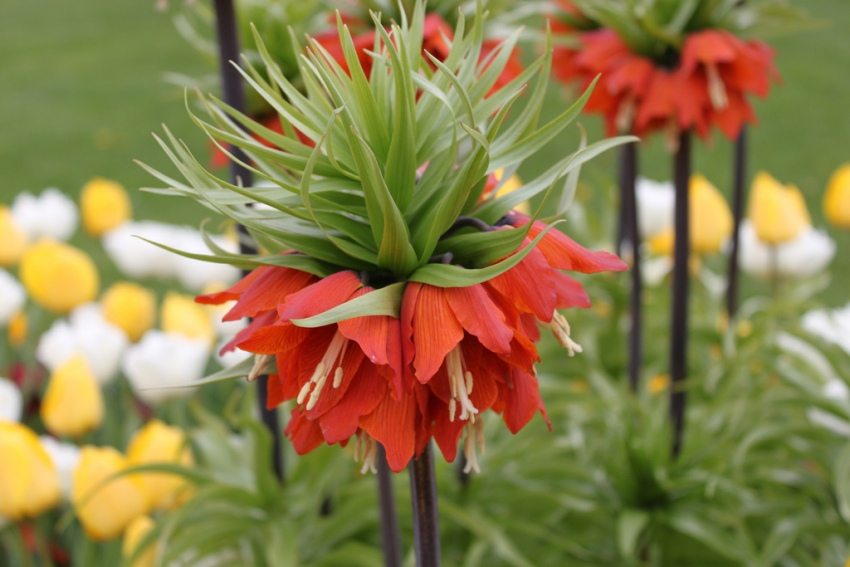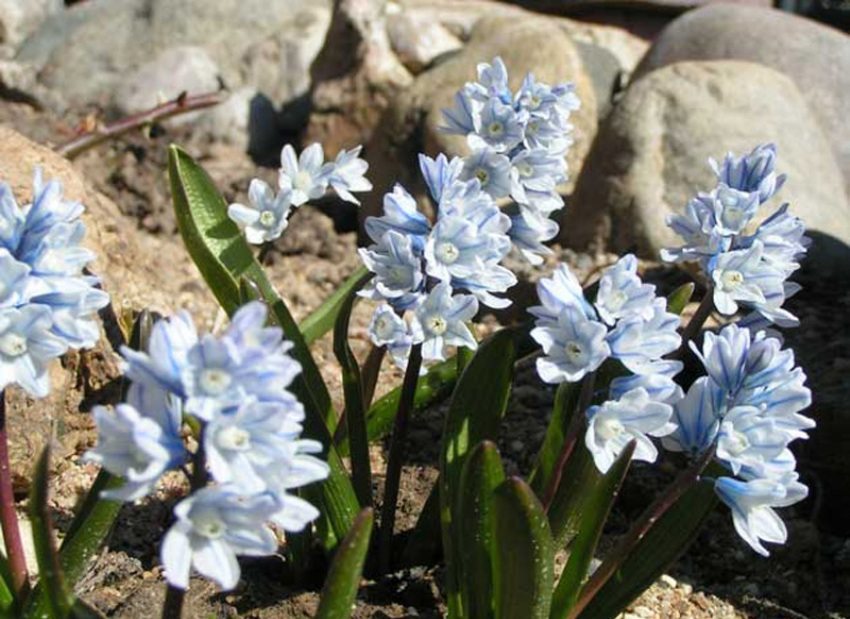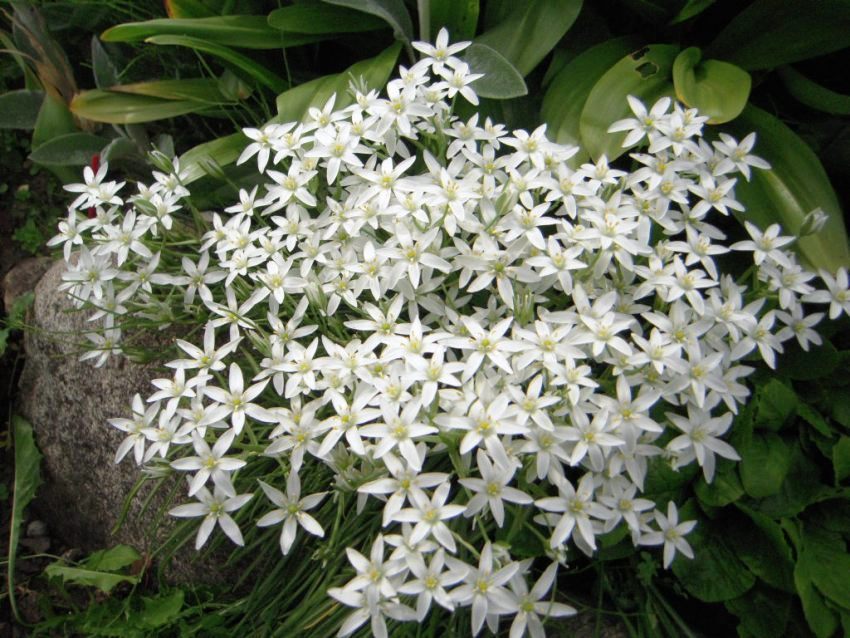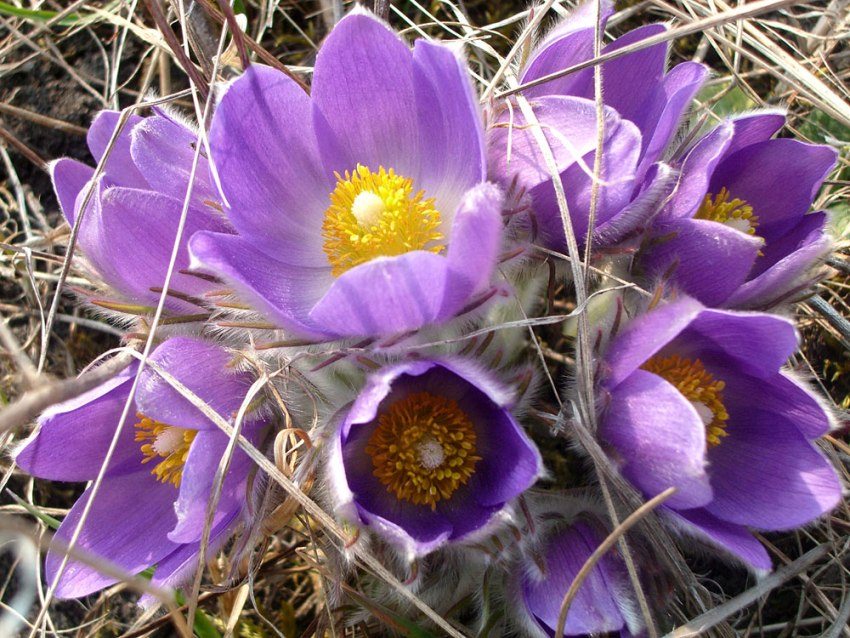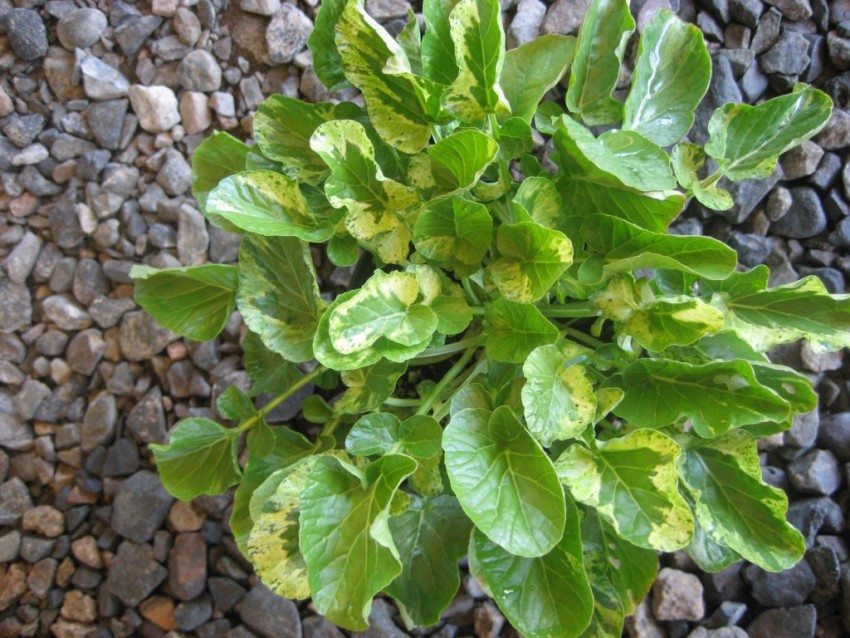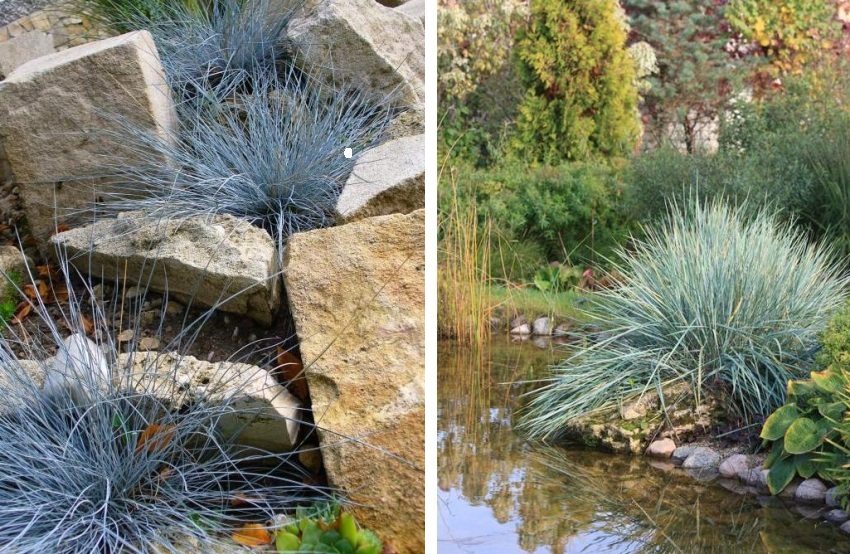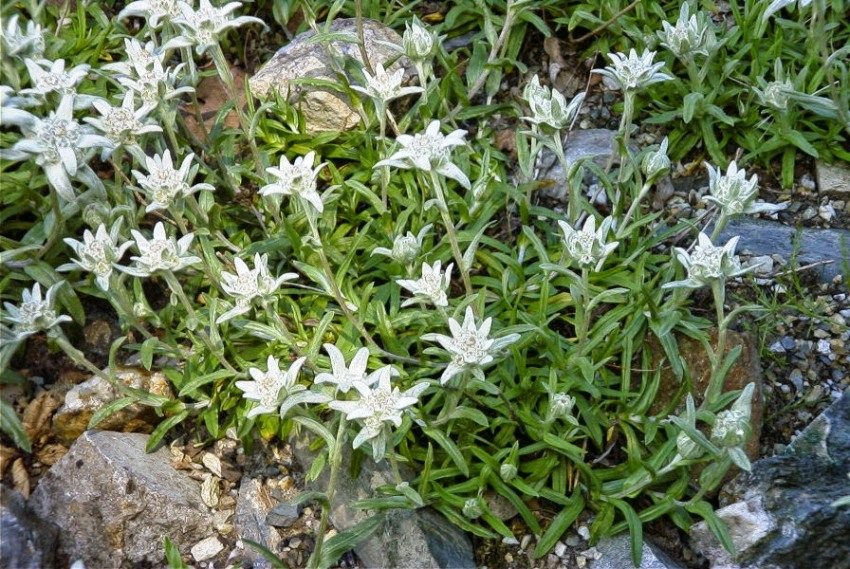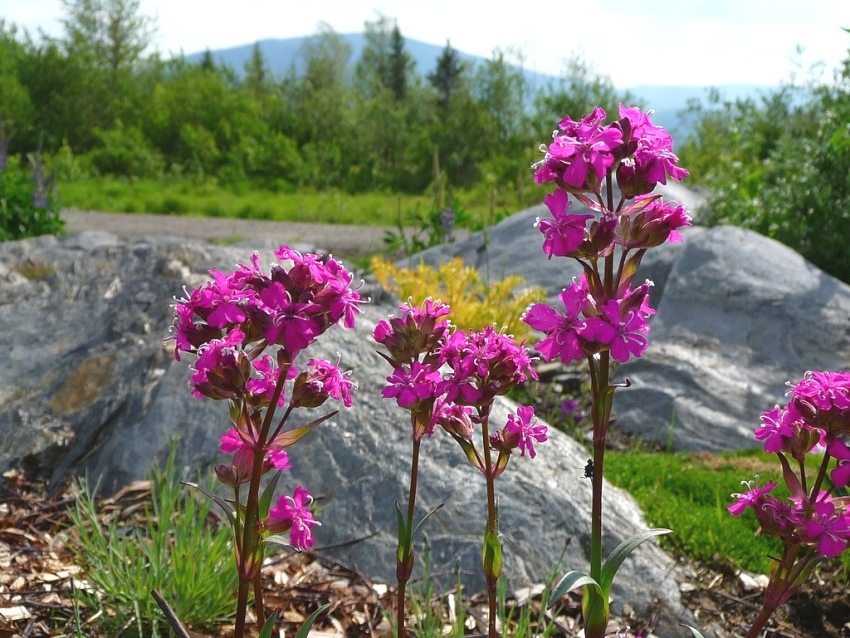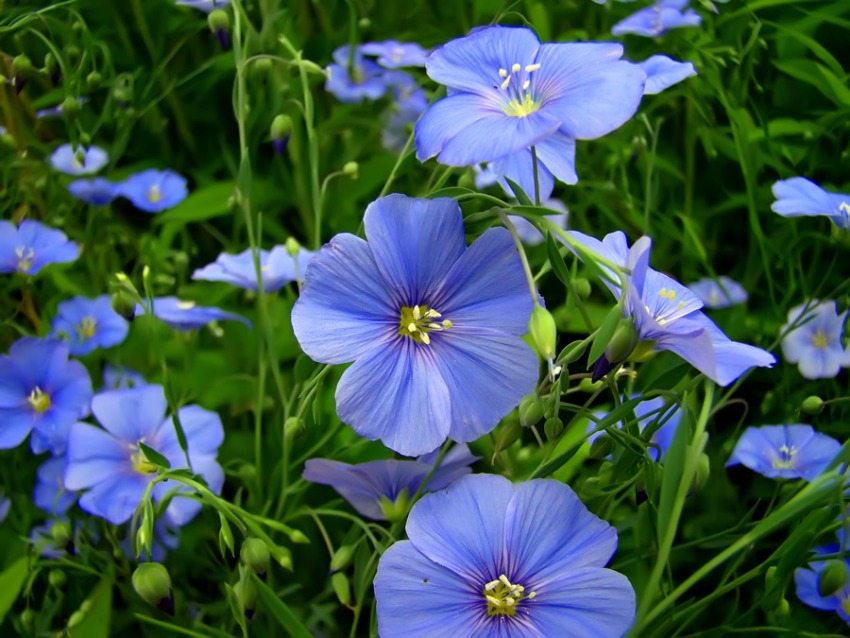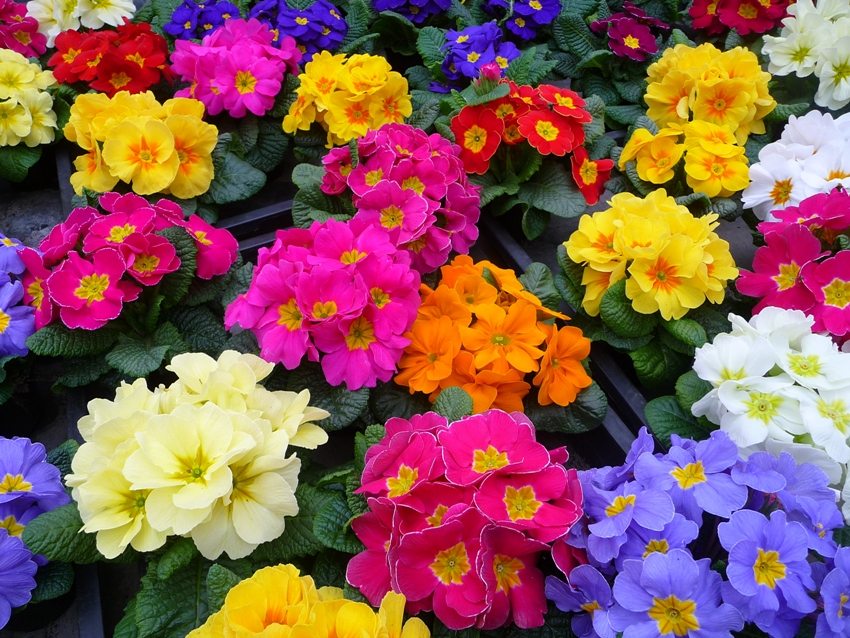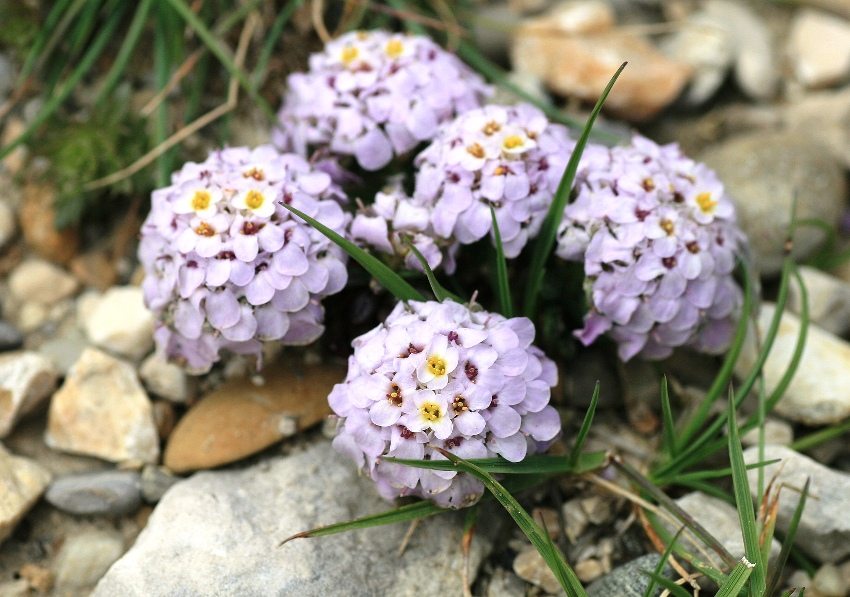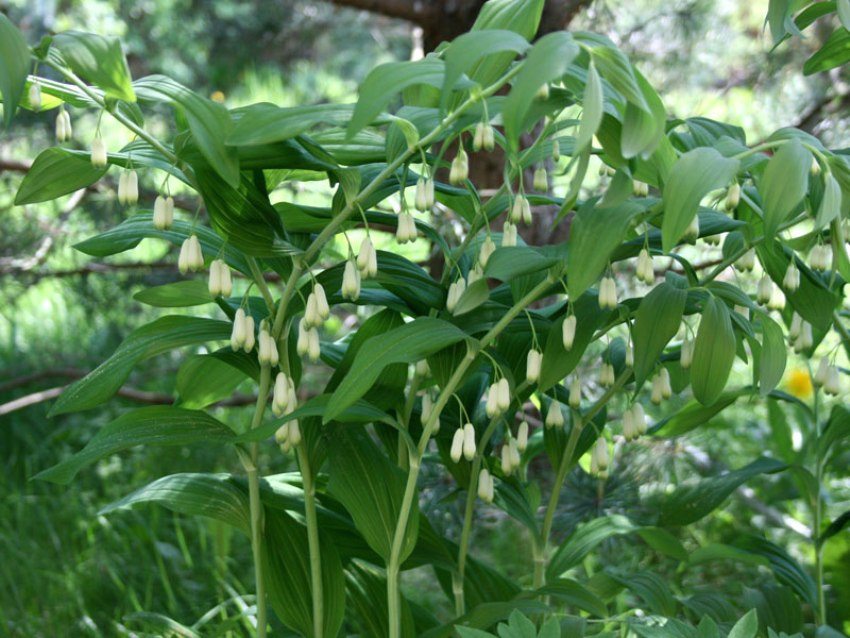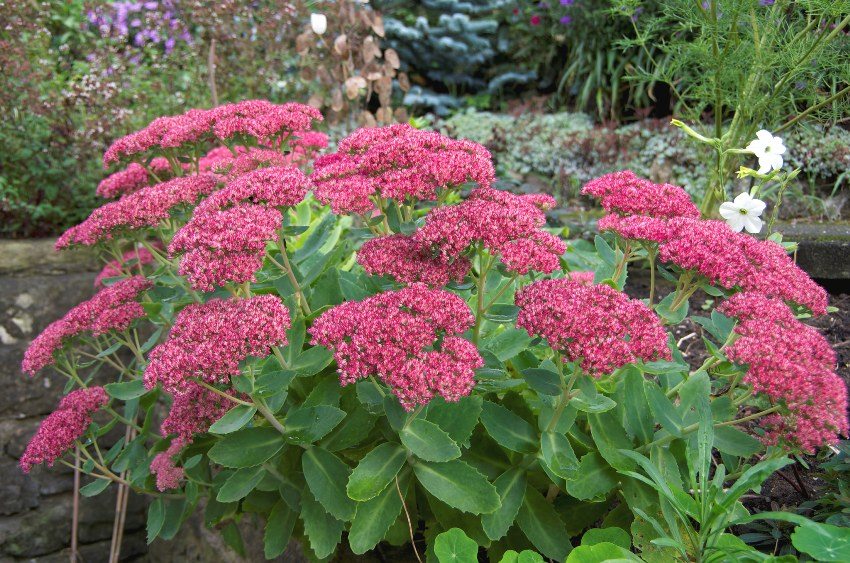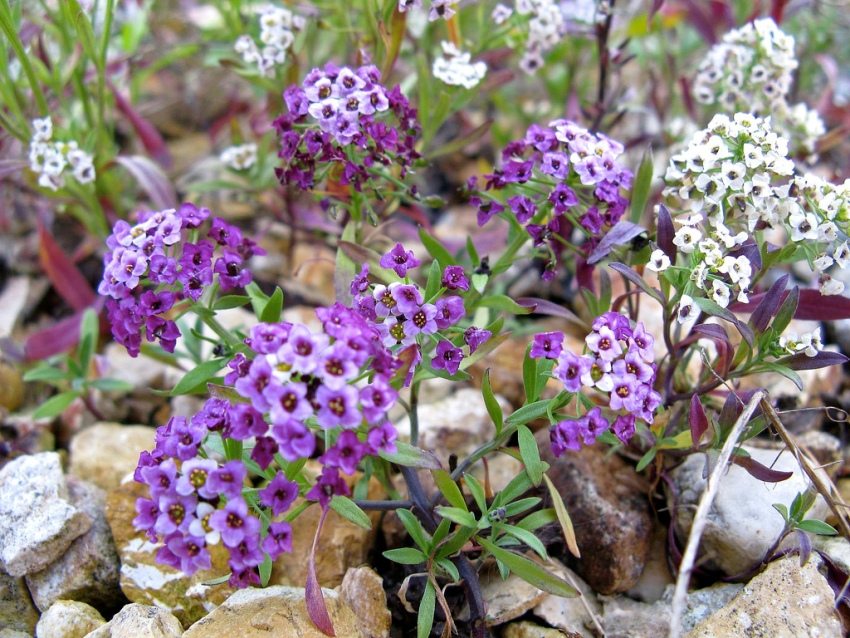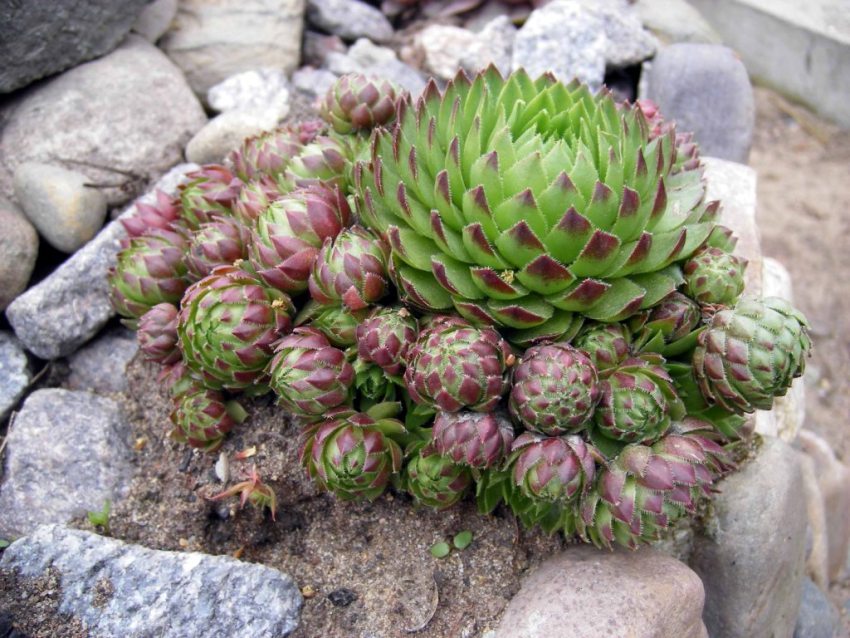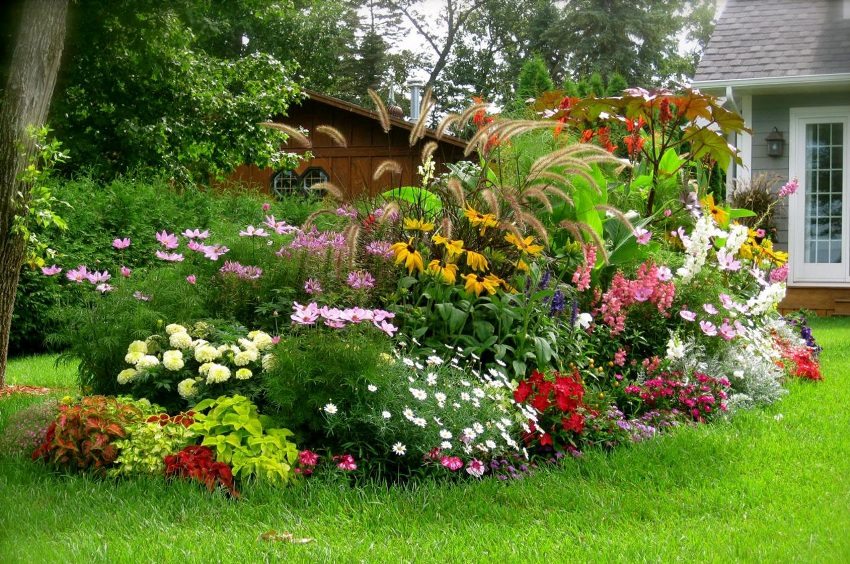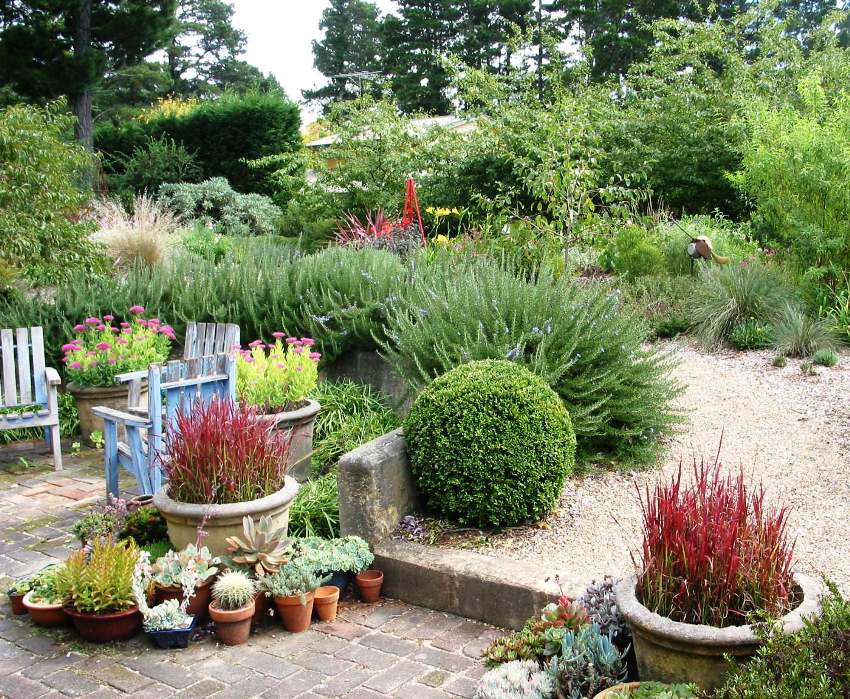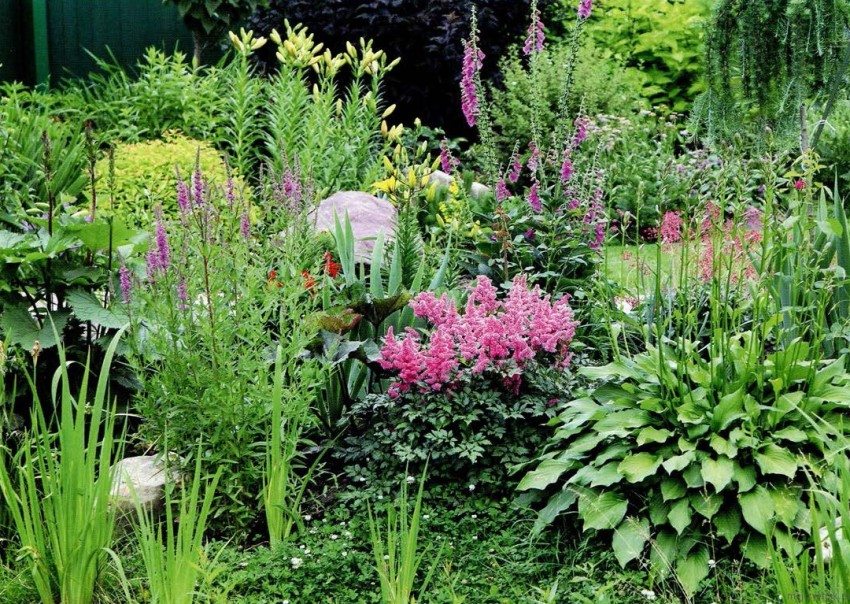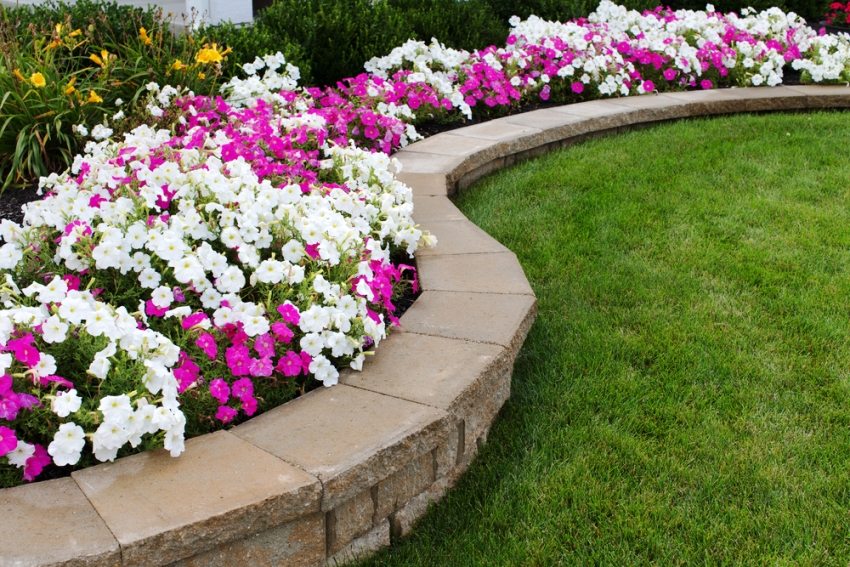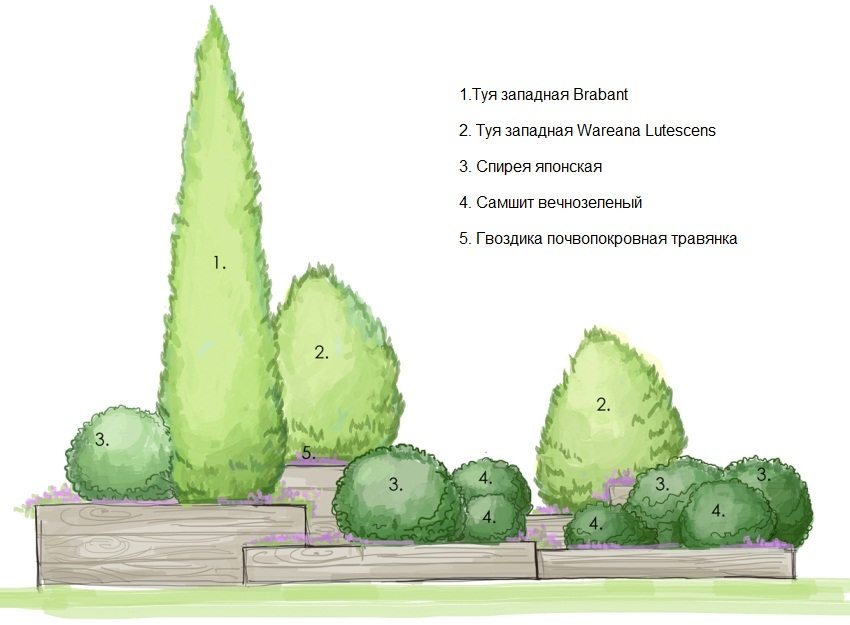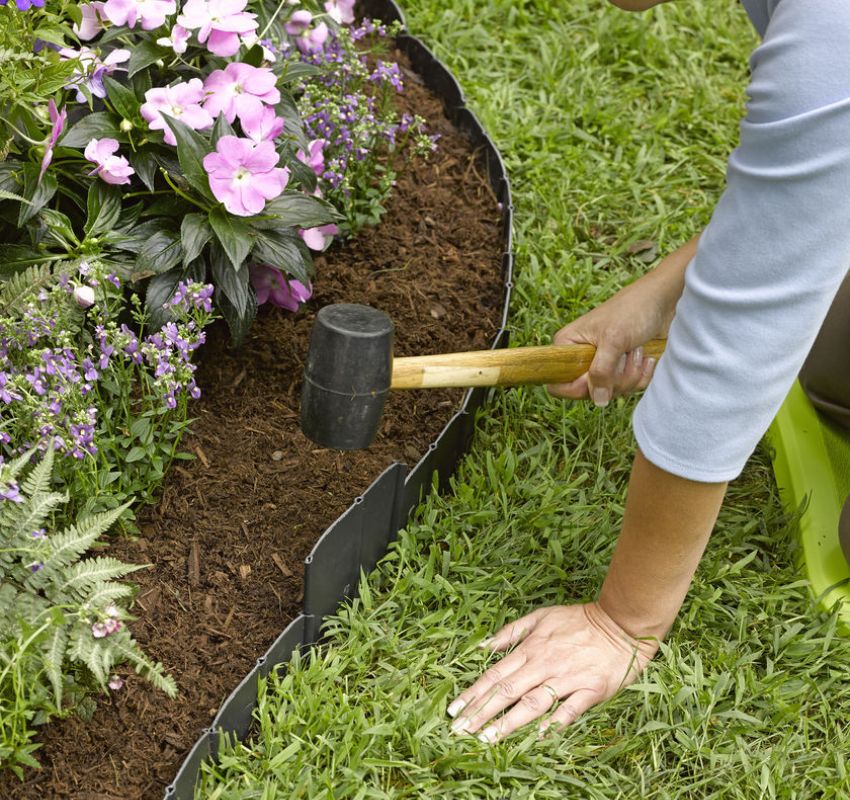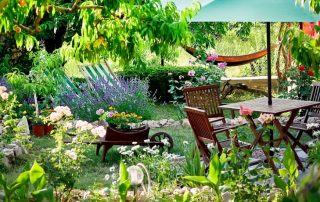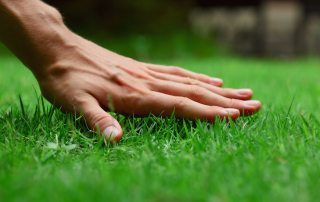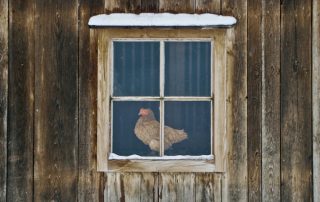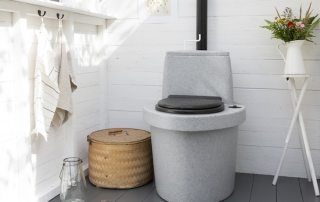In an effort to transform the garden and create an original landscape - look at the alpine slide. Inheriting the landscape of real rocky mountains, it is impossible to deprive the rock garden of such a natural natural decoration as mountain flora. Properly selected plants for an alpine slide will help to create the most natural look: names and photos with design recommendations will help create a real mountainous corner on the site.
Content [Hide]
- 1 Rock garden do it yourself
- 2 The nuances of choosing flowers for an alpine slide in the country with your own hands: what plants are needed
- 3 Plants placement schemes
- 4 Landscaping of an alpine slide with conifers
- 5 Herbaceous plants for an alpine slide: names and photos, a short description
- 5.1 Periwinkle
- 5.2 Saxifrage
- 5.3 Turfy pike
- 5.4 Soldanella
- 5.5 Asparagus
- 5.6 Sunflower
- 5.7 Grouse
- 5.8 Pushkinia
- 5.9 Physalisoid vesicle
- 5.10 Poultry
- 5.11 Lumbago
- 5.12 Plantain
- 5.13 Gray fescue
- 5.14 Alpine edelweiss
- 5.15 Likhnis
- 5.16 Linen
- 5.17 Bloodroot
- 5.18 Primroses
- 5.19 Iberis
- 5.20 Kupena
- 5.21 Sedum (sedum)
- 5.22 Rock alyssum
- 5.23 Rejuvenated
- 6 Mixborders in landscape design: photos of design options
Rock garden do it yourself
Before planting flowers, you need to prepare an appropriate quality base. When creating a rock garden, the following steps are followed:
- estimate the size of the site and match your wishes with the possibilities. Most plants for an alpine slide love light, so it is advisable to choose a well-lit place, perhaps with a little shading. Areas with relief differences are perfect;
- take care of quality drainage. Mountain plants generally do not like stagnant water, but prefer dry soil;
- select stones and determine the general appearance of the composition. If you have any problems with this, use the ready-made photos of the landscape design of the alpine slide with your own hands. Do not forget about the peculiarities of certain types of stones to leach and oxidize the soil. This knowledge will be useful for the correct selection of plants and protect them from death;
- fill up the soil between the stones. Plants for rock gardens are often unpretentious, but some like fertilized soil;
- let the whole composition settle for several weeks, or better - the winter period. After that, start the process of settling it with representatives of the flora.
You can find out more about the features of creating a drainage for an alpine slide with your own hands, step-by-step photo schemes for laying out stones and filling soil can be found on thematic Internet resources.
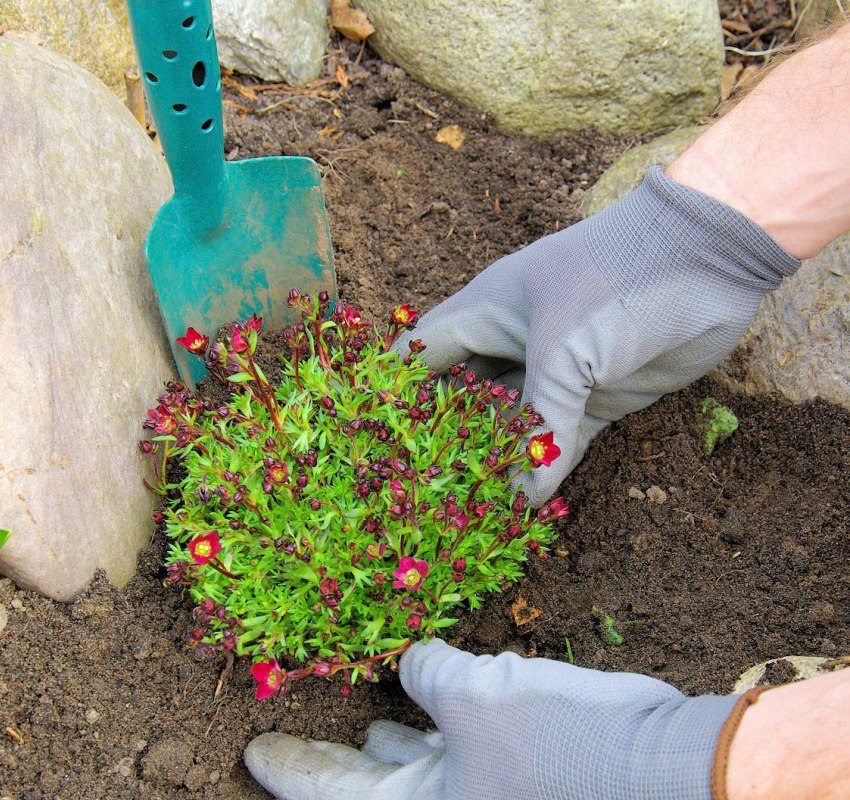
Planting plants between rock garden stones
The nuances of choosing flowers for an alpine slide in the country with your own hands: what plants are needed
When choosing plants for planting in a rock garden, you must be guided by both the climatic requirements for individual species and your own preferences. It is advisable to choose low-growing, slow-growing crops. This also applies to trees with shrubs.
Tall plants can shade areas, making it difficult for light-loving representatives to grow. But they are perfect for creating bright accents. Ground cover plants (photos and names of which will be presented below) will cover the surface and create a general background.
Helpful advice! You should not plant many rapidly growing ground cover plants, because they can drown out other species and spoil the overall appearance of the composition.
Perennial plants will be the most suitable for alpine slides. The periods and duration of their flowering must be taken into account. Having planted plants with alternate flowering, you can count on the fact that the decorative appearance of the slide will be observed from spring to late autumn.
So that immediately after winter, the alpine slide takes on a blooming appearance, the top is populated with annual early flowering plants. And in winter, conifers and shrubs will give liveliness to the composition. On an alpine slide, you can grow not only decorative, but also medicinal plants. Thyme, chamomile, sage will fit into the overall composition and bring health benefits.
Some plants grow well only in sunlight, so it is necessary to determine a place for them on the south side of the hill. Others prefer shade, the north side of the rock garden will suit them. Therefore, before planting, study the conditions for growing the species according to the photo and the names of flowers for the alpine slide.
Thus, adhering to the above recommendations, creating an alpine slide will turn into a real creative process, and the result will delight you for more than one year.
Plants placement schemes
At first glance, creating the most organic composition is quite difficult. You can resort to the help of specialists in landscape design. And you can study a photo of alpine slides with your own hands for beginners, be patient, analyze information and various planting schemes in different sources and create your own unique masterpiece. In order for the slide to look harmonious and some plants do not interfere with the growth of others, they are planted in tiers.
For each tier, certain types are selected:
- the foot of the hill is populated with those species that love moisture and fertilizer-rich soil. At the foot of the rock garden there is usually high humidity and not always adequate lighting. Therefore, here you can give preference to decorative grasses (for example, turfy pike), as well as to the regulars of the alpine hills, rejuvenating and saxifrage;
- the middle tier is occupied by less whimsical representatives of the flora. Since there will be less light on the middle tier, plants with the ability to tolerate shade are selected. Phlox, lumbago, primroses, etc. will be appropriate. And varieties of ground cover sedum will help fill the voids between upright flowers;
- early flowering perennials, annuals and bulbs, requiring warm sunlight and dry soil, are located on the tops. The top of the alpine hill will look picturesque with Iberis, which will cover it with a blooming white veil. Lilac colors can be added with creeping thyme. Yellow varieties of rock alyssum will dilute the lilac-white range. The light-loving mysterious edelweiss can rightfully be called the king of the summit.
Trees and tall herbaceous plants are planted first. Usually their place is at the base of the slide or in the background. They will look organically near large boulders. Low-growing perennials are planted all over the hill.The tiers are visually separated using stones or plants higher.
While the slow-growing ones grow perennial flowers, the area can be temporarily decorated with annual plants with reduced self-seeding. It can be purslane, marigold and other low-growing plants for landscape design, photos and names of which can be spied on gardening sites.
Related article:
Alpine slide with your own hands. Step by step photo instruction. Creation of a rock garden. Rules for arranging the drainage base and the location of stones. Suitable plants.
Landscaping of an alpine slide with conifers
No mountain landscape is complete without dwarf coniferous bushes. It can be creeping, pillow-shaped varieties of conifers such as:
- thuja western (Danica, Little Dorrit, Hoseri);
- mountain pine (Mughus, Gnom, Mors, Winter gold);
- Norway spruce (Little Gem, Nidiformis, Will's Zwerg, Echiniformis);
- Canadian spruce or gray (Conica, Alberta Globe);
- junipers (Nana, Еchiniformis, Green Carpet, Tamariscifolia, Blue Carpet, Blue Star);
- fir (Korean).
For small alpine slides created with your own hands (such photos can be seen in different sources), the height of the conifers should not exceed 0.5 - 0.7 m.If the site is large and the rock garden is extensive, then their height can reach one and a half meters. You can combine ephedra to create a contrast in color and shape. Another option is a smooth transition from one form to another. This creates a dynamic picture. The same technique can be applied to color dynamics.
Compliance with the recommendations for the correct selection of substrate for conifers and planting time ensures that these evergreen plants will decorate your corner of nature for a long time.
Herbaceous plants for an alpine slide: names and photos, a short description
Below we will consider which plants are most suitable for planting on alpine slides.
Periwinkle
As you can see in the photo, periwinkle blooms with blue flowers, which, together with juicy green leaves, create a dense cover. Periwinkle is unpretentious, feels great both in the sun and in the shade. It can be used to braid voids between tall plants. The flowering period is from late spring to autumn.
Saxifrage
This perennial plant is able to exist on any soil, even on stones. Therefore, it is used to decorate those places on alpine slides and rockeries where other flowers cannot survive. Small dense leaves grow into a carpet and are covered with colorful flowers. As the photos illustrate, saxifrage can be pink, red, white, golden, blue and yellow. The flowering period and color depends on the type of this ground cover plant, and there are about 370 of them in total.
Turfy pike
Another name for this ornamental cereal is "meadow". The plant is in the form of a neat dense bump, has hard thick leaves and inflorescences of small spikelets in the form of a spreading panicle. It is a moisture-loving herb that loves sun, but not drought. There are many decorative varieties with different colors. It can be accentuated in the overall composition. It also looks great in bulk. Soddy pike, cold-season, begins to grow in spring, "rests" in dry soil in summer and continues to grow in rainy autumn.
Helpful advice! In the spring, it is better to prune old leaves that have turned yellow during the winter to give room for new growth.
Soldanella
Translated from Spanish - small coins. A genus of mountain flowers also known as "snow bells".They are small in size, white or blue, bell-shaped stalks and heart-shaped leaves. Soldanella is whimsical to care for, requires moist soil with good drainage. But the sight of this delicate flower will fill the rock garden with the freshness of the mountain peaks. It is planted in spring by dividing the bush.
Asparagus
The genus Asparagus has about 300 species. This plant is better known to us under the name "asparagus" (photos of the most popular plants can be seen below). Heat-loving species have dense acicular greens of various shapes. The inflorescences of this plant have small white flowers that turn into bright red berries in autumn. For decorating an alpine slide, whorled asparagus is more suitable. A photo of this species confirms that it produces very dense greens. Globular asparagus with more compact bushes will also work.
Sunflower
Low herbaceous plants growing shrubs with creeping stems. It has gray-pubescent leaves and silky flowers of yellow, orange, pink or white color. For the sunflower, it is important to choose a well-heated, sunny place with good drainage. The soil should be alkaline, sandy or stony. The plant is a young plant, planted by cuttings. The most commonly used in decoration is the monotonous sunflower. A photo of its varieties in various colors will help you choose the color you like.
Grouse
Grouse flowers are perennial bulbous plants and have many species and varieties. They got their name because of their variegated color, which can be snow-white, orange, purple and even checkerboard. The spring primrose of the lily family - fritillaria - is considered popular in gardening. A photo of hazel grouses shows that they look like bells lowered down with a “bare” stem.
You can pick up low varieties, for example, Alba, Artemis, Aphrodite. They reach 40-50 cm and do not have a crown of leaves above the inflorescence. As you can see in the photo, the imperial hazel grouse flower can have an orange, red or yellow color, its stem reaches 1 m.The leaves are located near the ground, as well as above the inflorescences in the form of a crown. It is better to plant it in partial shade and transplant it to a new place every 2-3 years.
It is interesting! Rodents and moles do not tolerate hazel grouse bulbs. Therefore, these flowers are planted in the garden not only for decorative, but also for protective purposes.
Pushkinia
It is a bulbous plant. It is planted together with other early spring bulbous plants. Pushkinia loves light and good soil drainage. It is divided into two types:
- Proleskovidny Pushkinia has basal leaves. It grows up to 30 cm. It blooms in March-April. Inflorescences in the form of bells of white or blue color;
- hyacinth pushkin (the photo shows the differences). Hyacinth has blue or white flowers up to 10-15 cm high. The inflorescence contains from 12 to 30 flowers. Blooms in May.
Physalisoid vesicle
This is a perennial with numerous leaves, which blooms with bushes up to 20 cm high. Flowers of purple color are collected at the top in the form of umbrellas. Leaves of an amazing bluish color. The plant is unpretentious to care for, but it is better to plant it in a sunny place. Blooms in April-May. After that, in place of the flowers, seeds are formed in the form of balls. Long after flowering, the physalis bubblewort will delight you with its unusual leaves.
Poultry
This plant has up to 130 species. The birdhouse grows (see the photo of flowering below) in bushes with long narrow leaves and small flowers at the top.The flowering period and color (white or yellow) depend on the species. Unpretentious in care, loves sunny places, not picky about the soil.
Lumbago
Better known as sleep herb. It has straight stems and leaves covered with fine hairs. Plant height up to 50 cm. Flowers are large in the form of bells of white, golden, purple, purple or silver colors. There are many types of lumbago (photos on the Internet clearly demonstrate their variety):
- disclosed;
- spring;
- ordinary;
- Chinese;
- meadow;
- doubtful.
Backache love dry soil. Therefore, they get along well on alpine slides and rockeries. There are slopes that do not allow water to linger. These flowers feel great in an open area or in light shade.
Plantain
Previously, this plant was removed from the site as a weed. But with a thoughtful planting, plantain is increasingly used in decorating plots. For example, Variegata has variegated leaves. With its help, they decorate alpine slides, paths in the garden. Sunlight and moderately nutritious, well-drained soil are all a plantain needs. Photos of the use of this plant in design ideas for the garden will suggest planting options.
Gray fescue
It has very spectacular narrow and sharp blue-gray leaves that form a low (up to 60 cm) lush bush. Looks great on alpine slides. It blooms in summer with gray-green inflorescences in the form of soft panicles. Gray fescue loves warmth, sunlight and well-drained soil. The composition of the alpine slide will take on a lively look, thanks to the silvery color of the fescue (photo confirms this).
Alpine edelweiss
This romantic plant will be the highlight of any rock garden or rockery. Low, about 20 cm, peduncles with yellowish inflorescences-baskets. But edelweiss leaves give a special charm. Their shape in the form of a silver-ash-colored star looks great in landscape landscapes. This flower loves light, so its place is at the top of the hill.
It is interesting! Edelweiss is considered the flower of loyalty and love. According to legend, he grew up on rocks from which a young man and a girl in love rushed to avoid separation.
Likhnis
The people call it "dawn". Refers to perennial herbaceous plants. Feels great near water bodies. Used mainly for mixborders. Low-growing alpine lychnis is suitable for alpine slides (the photo shows the red-pink flowers of this species in the rock garden). This plant requires moderate, regular watering. It must be transplanted to another place after 3-4 years.
Linen
Depending on the species, it can be a perennial, annual or subshrub. About 25 species are used for decorative purposes. Large-flowered flax is mainly used for decorating alpine slides. A photo of different varieties of flowers (blue sky, charm salmon, charm crimson, clear eyes) will help you choose a plant in accordance with personal preferences.
The flowering of delicate flax looks great against the background of stones. The stem height of this large-flowered species is about 60 cm. The plant likes well-lit or slightly shaded places with poor loose soil.
Bloodroot
Rhizome or herbaceous plants, can grow as a subshrub. The species determines the growth period (annual, perennial), as well as the height of the stems. There are high (up to 1.5 m), they are used for flower bed and hedges. Low and creeping species are planted on alpine slides and rockeries.There is a pink, purple cinquefoil. Photos of examples of the use of this plant in gardening will suggest planting options. The flowering period is from May to July.
Primroses
In natural conditions, these flowers prefer shaded places on mountain slopes, in crevices of rocks in the vicinity of bushes and trees. Therefore, primroses will perfectly take root among rockery stones or on an alpine slide. Primroses are popular with landscape designers because of the variety of species and colors.
Iberis
About 30 species of plants of this genus combine annuals, perennials and shrubs. Flowering period May-June. Iberis inflorescences can be pink, lilac, white. Ornamental varieties can be red. The plant is unpretentious in care, loves dry, loose soil. Open areas, sun or partial shade are the best place for Iberis. Photos of decorating alpine slides with Iberis demonstrate the organic nature of this plant against a stone background.
Kupena
Perennial herb of the lily family. It has an arched stem, large leaves and white flowers in the form of small bells. In the photo, you can see that their placement along the stem gives the impression of gentle dew. Plant height up to 60 cm. Kupena loves moist, but without stagnant water, soil. The alpine slide is a great place for her.
Sedum (sedum)
It has more than 500 species with flowers that are not similar to each other. It can grow as a herbaceous perennial or undersized shrub. Stonecrop inflorescences in the form of umbrellas or single, the color is the most diverse. They love the sun, but they feel quite comfortable in shaded areas. Sedum is unpretentious to the soil, does not require high humidity and can grow even on rocky slopes.
The variety and simplicity makes them indispensable for decorating mixborders, alpine slides and rockeries. The photo of sedum plants of different types shows how multifaceted and original these plants can be.
Rock alyssum
Another suitable plant for an alpine slide is rock alyssum. Here are some varieties of this plant:
- the plenum has a small stature and small double flowers;
- compactum grows up to 18 cm and has small inflorescences;
- citrinum - low alyssum with yellow flowers;
- the golden wave also has yellow flowers. Plant height reaches 20 cm.
Alyssum rock flowers have a strong pleasant aroma. The plant itself is compact, loves well-lit areas, fertile soil and good drainage. Between warm stones in well-fertilized soil, it produces abundant greenery.
Rejuvenated
The plant is popularly called "stone rose" for its unusual original appearance. And in translation from the Latin language it means "eternally living". One of the most used plant species in the decoration of alpine slides. The shape and size of the rosettes were young (a photo confirms this) is diverse. The color can be pink, green, yellow, crimson, burgundy. Moreover, the same flower can change color depending on climatic conditions.
This groundcover species grows to create a unique plant carpet of succulent thick leaves collected in a rosette. Due to the moisture-absorbing properties of the leaves, the plant is drought-resistant and thrives on rocky slopes.
Mixborders in landscape design: photos of design options
Mixborders are loosely combined flower beds that are very popular in landscape design.If creating an alpine slide requires a lot of effort, then the mixborder will be too tough for even novice gardeners. Using the recommendations of specialists in the selection of plants, photo-schemes of mixborders, you can easily decorate the paths with flowering hedges or outline the areas of the site with your own hands.
Thus, the choice of location for this versatile flower garden will depend on its purpose. Mixborders are used as:
- curb along the paths on the site;
- a hedge to separate functional areas;
- for decorating unsightly areas of the territory;
- the inner or outer boundary of the site.
These criteria are taken into account when selecting plants for a mixborder. After all, it is possible to use both high-growing and low plants, up to ground cover. Mixborders from conifers and shrubs look great. Schemes of various options can be combined to suit your taste. For example, a mixborder made of spherical thuja and petunia looks very impressive. The monotony of the greenery of the conifers creates a wonderful backdrop for bright and elegant flowers.
Another option would be a mixborder made from tall plants only. A juicy green fern is planted as a background, and in front of it is any kind of tall flowers with a bright color, for example, astilbe.
A three-stage mixborder is an even neat rows of flowers of different heights. It can even be plants of the same species, but with a variety of colors. To create such a flower garden, you need to know what level of growth the flowers reach. Their flowering period should also coincide.
Helpful advice! Plan any flower garden taking into account the height of an adult plant.
You can also frame the mixborder with rounded, uniform stones of dull colors of the same size. Their monochromaticity will create the desired contrast and emphasize the play of colors of the flower garden.
The mixborder looks exotic from such green plants as fern, dracaena, zelenchuk, kupena, red-leaved aggloanema. This composition is devoid of the variety of colors of flowering plants. But its beauty is in the contrasts between different shades of green and interspersed with white and red elements.
If you want to emphasize the brightness or unusual color of one particular plant, then it is better to limit yourself to one row of the flower garden. A perfect example would be a row of imperial hazel grouses (a photo of flowers conveys all the splendor of such a mixborder).
It would be better to plant low-growing plants in several rows so that they do not look poor and create a composition of a continuous hedge. An example would be ground cover plants or ornamental cabbage mixborders.
Plants for mixborders, their planting scheme
If you do not plan to change the style of the mixborder every year, then you should populate it with perennial plants. They are not demanding to care for, and the variety of their species and varieties will satisfy even the most demanding gardener. They will tell you how to create photo-schemes from perennials with mixborders indicating the place of planting of this or that plant.
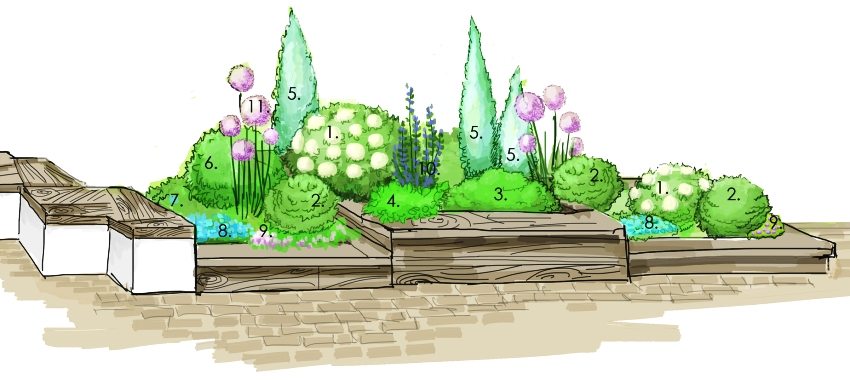
Mixborder scheme: 1 - tree hydrangea; 2 - shrub cinquefoil; 3 - Japanese spirea; 4 - soft cuff; 5 - Sky rocket juniper; 6 - aster Blaubux; 7 - alpine aster; 8 - Armenian veronica; 9 - herb carnation; 10 - delphinium; 11 - giant bow
If you want to change the appearance of your flower beds every year beyond recognition, include bulbous and annuals in the composition. With the help of ground cover plants, a general background is created, and ornamental grains and deciduous shrubs will bring natural harmony to the overall composition.
When choosing plants, be sure to consider their flowering periods so that the flower garden does not look unkempt and inorganic.Competent selection of crops will provide the mixborder with continuous flowering and an elegant look. Some photos of mixborders with intensely blooming species attract a variety of colors. But here you need to know when to stop and not overload the flower garden with a large number of colors.
Arrangement of a classic mixborder in stages
It's no secret that the end result depends on the personal preference and inspiration of the flower garden creator. But there are the main stages of creating a classic mixborder that you need to familiarize yourself with in order to achieve the most picturesque look:
- Planting of basic (skeletal) slow-growing plants (shrubs or conifers). It can be juniper, dwarf species of thuja, pine, elderberry, jasmine, white turf.
- Filling the flower garden with perennial plants. How to create a mixborder from perennials, patterns and names of flowers can be studied step by step on the sites of gardeners or landscape designers. These are mainly plants of medium height, the purpose of which is to decorate the stems of shrubs growing behind.
- Supplementing the picture with annual and bulbous plants. They land in empty places in front of perennials. Be sure to include primroses, which will fill mixborders with spring mood on the first sunny days.
Whatever your idea for the landscape design of the site, remember that it is quite possible to create a beautiful flower garden or slide on your own. Arm yourself with the necessary tools, study the photos and diagrams of mixborders or alpine slides, pick up the plants you like and feel free to get to work. You will see that soon your site will be able to boast of a well-groomed unique landscape design, created by your own hands.
